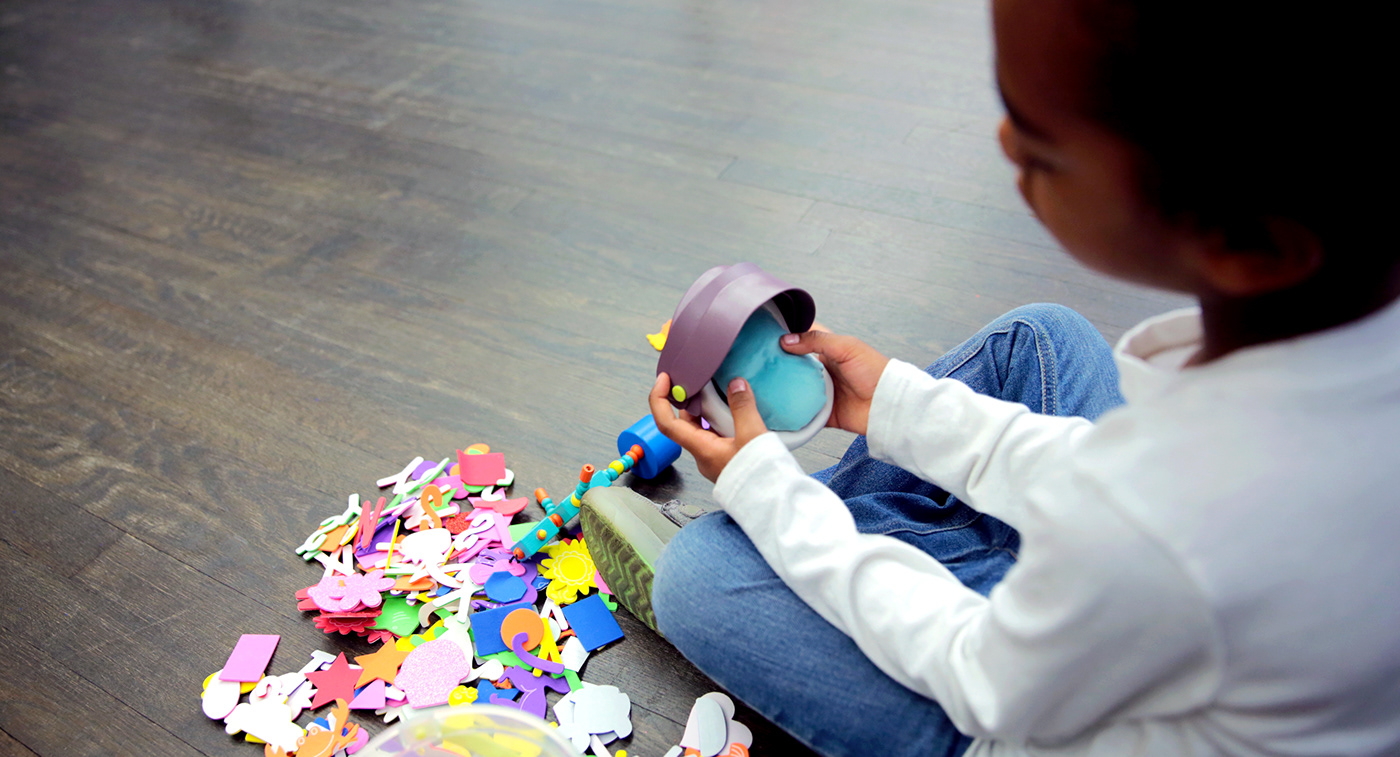
Kids on the autism spectrum or with sensory sensitivity have a hard time communicating to caregivers when they need help dealing with emotions or with environmental triggers. Cue is a therapeutic toy that gives a visual signal to caregivers whenever kids need support while simultaneously giving kids the agency to begin the soothing process themselves.



ABOUT THE USER
Kids on the autism spectrum or with sensory sensitivity process the world in a different way—everything gets amplified, and their brains have trouble discerning all that stimulus. As author Nancy Peske points out, “It’s like a traffic jam in your head, with conflicting signals quickly coming from all directions, so that you don’t know how to make sense of it all.” It's very hard to handle yourself when all you want to do is run from that situation. But what if children had more agency over their surroundings? What if they could communicate to their parents that they are overwhelmed?
HOW IT WORKS
The toy helps children communicate with their parents when they are feeling overwhelmed or triggered by the environment but can't express it verbally. Allowing them to initiate the calming process by pressing on the soft foam material, which activates the shell to cover the toy—just like a tight hug or a turtle retreating into its shell—thus signaling the need for their parents’ help.

The toy helps kids experiment with pressure as a tool to relax and begin the process of calming down, maintaining agency over their emotions but allowing for parental support. Squeezing and applying pressure are proven techniques used for therapeutic toys.For parents with kids on autism spectrum, understanding what triggers and calms them down could be a huge game-changer, as it means they can minimize these experiences and work together to develop coping mechanisms.






Cue is part of my year-long master thesis exploring play as a catalyst for childhood equality, titled Unauthorized Play: Design provocations for children in crisis.

